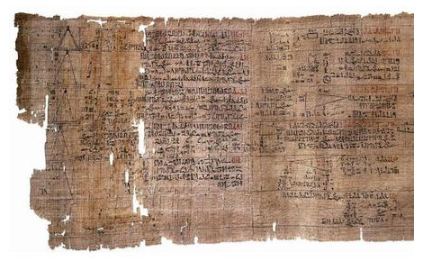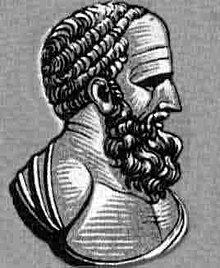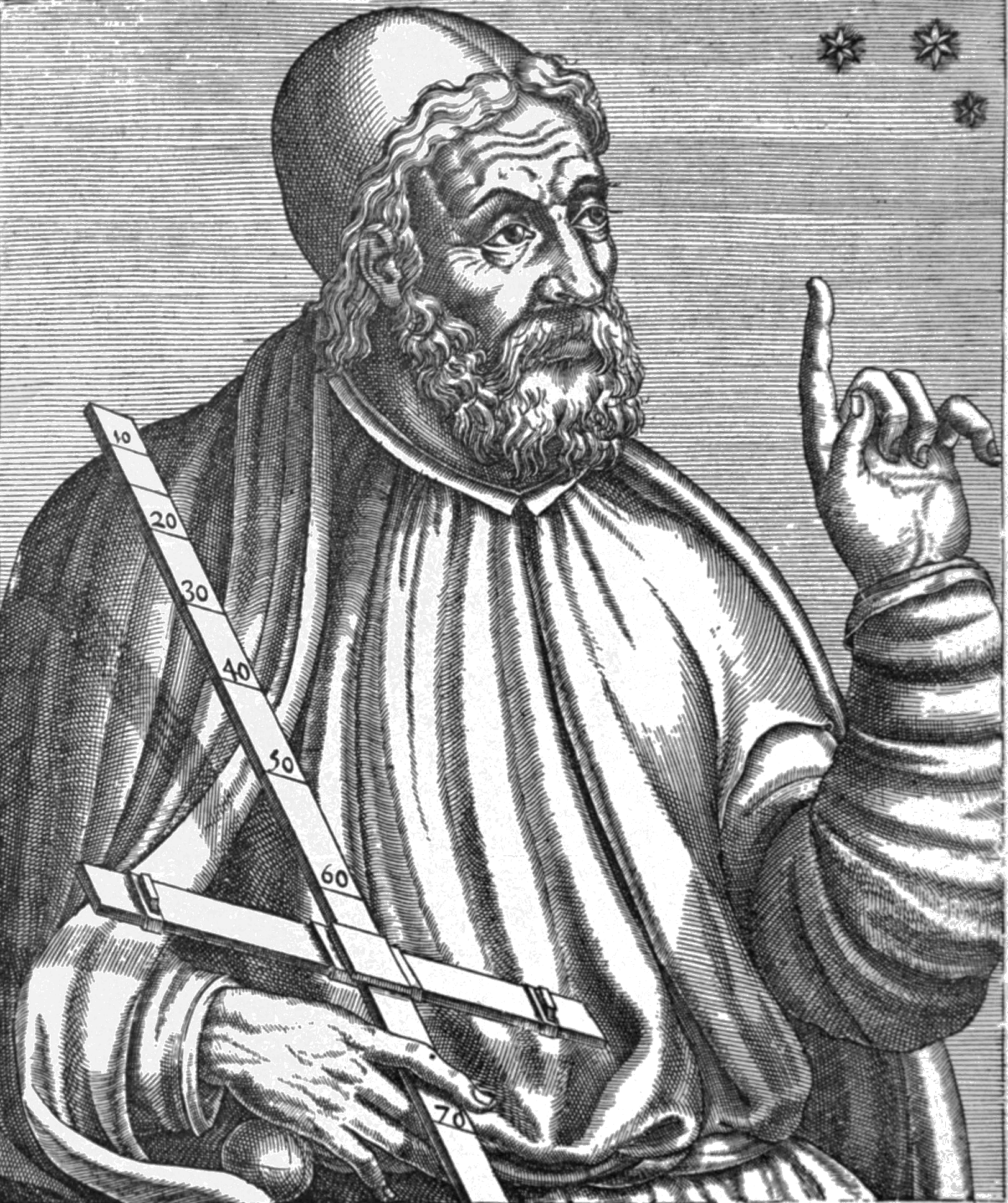Where did it begin?
The origins of trigonometry are often traced back to almost 2000 BC in the Egyptian and Babylonian civilizations.
It is quite possible that the origins of trigonometry were implemented at an earlier date, however, as a modern society,
the earliest writings that indicate an understanding or originality of trigonometry date back to these two civilizations
around 2000 BC (USU Digital Exhibits).
The Plimpton Tablet

One of the oldest surviving pieces of evidence relating to trigonometry is the Plimpton Tablet. The Plimpton Tablet is
estimated to have been around since 1800 BC, in the Old Babylonian era. This tablet is considered one of the most
sophisticated artifacts of the ancient world, as it contains 15 rows of arithmetically complicated Pythagorean Triples.
In our modern society, we consider Pythagorean Triples to be a set of three whole numbers (a, b, and c) that satisfy the
equation a2+b2=c2. The reason this tablet is monumental is that it seems as if the ancient Babylonians were thousands of
years ahead of their time in even interpreting what Pythagorean Triples are. Many historians and mathematicians have
investigated the Plimpton Tablet to be able to understand how these ancient Babylonians interpreted and used triangles.
Although it is found that they thought of triangles and shapes very differently than our westernized world now does, it is
confirmed that the ancient Babylonians were indeed exploring the beginnings of modern trigonometry (Mansfield & Wildberger, 2017).
The Rhind Papyrus

Another one of the oldest surviving pieces of evidence relating to trigonometry is the Rhind Mathematical Papyrus.
The Rhind Papyrus dates back to around 1650 BC and contains many mathematical and trigonometric computations for constructing
the pyramids in ancient Egypt. The work shown on the Rhind Papyrus mostly outlines the height and base lengths of the
pyramids and other triangles used to create the pyramids (The Rhind Papyrus).
Ancient Babylonians
Along with the table of Pythagorean Triples mentioned earlier, the ancient Babylonians were also using degree measurement
for angles before the year 300 BC. It is known that their unit of measure was 60, so it is hypothesized that they based the
degree angle measurements we use today off of that. Other ancient mathematicians, and eventually modern mathematicians,
adopted this practice. Around this time, the Babylonians were also among the first to give coordinates to the stars in
the sky. They based these coordinates mostly off of degree angles (Joyce).
Hipparchus of Nicaea

Chronologically, next in line towards the development of modern trigonometry is Hipparchus of Nicaea. He lived from
approximately 180 BC to 125 BC and was from Greece. The majority of the work done by Hipparchus relates to chords.
A chord is a line segment that contains two points on a curve or circle. Hipparchus was the first to create and is most
famous for his table of chords. This is considered one of the first trigonometric tables created. To accompany his table
of chords, he wrote a 12-book work of chords in a circle. This would be considered one of the first known works of
trigonometry- although the books have since been lost. Hipparchus was also an astronomer and used the ancient Babylonian
way of charting the stars (Joyce).
Chords
The reason that Hipparchus was one of the first individually credited with the invention of trigonometry is because of the
use of chords in later and more modern trigonometry. The Greek, Indian, Arabic, and early Eurpoeans would later use chords
to create triangles inside of what we know now as the unit circle. These chords would then be used in comparison and
described with the ever familiar trig ratios (sine, cosine, tangent, secant, cosecant, and cotangent). This topic will
be discussed further in the explanations page (Joyce).
Menelaus

Menelaus was another Greek mathematician (although he was born in Egypt and later died in Italy) who contributed to
trigonometry around 100 AD. Most of his work relates arcs of great circles on spheres. Although he stated his work in
terms of chords, just as Hipparchus did, today we relate much of his work in terms of sines. His work mostly deals with
relating parts of interwoven triangles to each other (Joyce).
Ptolemy

Ptolemy was another Greek mathematician who greatly contributed to modern trigonometry. He lived around 100-178 AD.
His work was mostly mathematical theory relevant to astronomy. He created many trigonometry tables and a table of chords
for angles from ½ degree to 180 degrees in increments of ½. Although he used many of these tables in astronomy, today we
use similar tables and values in dealing with trigonometry and its many applications. He also developed and discovered many
relationships that are found within angles created by chords in circles (Joyce).
Conclusion
Although each of these civilizations and individuals only contributed what we would consider small pieces of modern
trigonometry today, each piece was monumental in the creation of the trigonometry concepts and relationships that are
constantly used in our modern society.